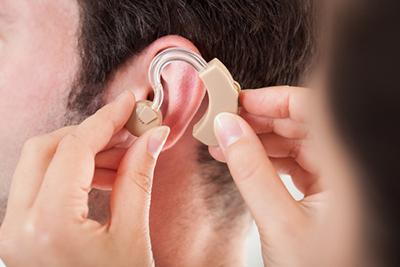
Suffering from hearing loss? Drs. Kathryn McGee, Kelly Long, and Joi Murray at Carolina Hearing Institute of Irmo, Columbia, Lugoff, Sumter, and Lexington, SC can help you choose the best hearing aids.
Types of Hearing Aids to Choose From
Living with hearing loss can be scary and frustrating. However, hearing aids can amplify your hearing and make life more enjoyable. These devices have three basic components: 1.) the microphone that receives the sound waves and turns them into electric signals, 2.) the amplifier that increases the signal’s strength and transports it to your ear, and 3.) the receiver that delivers the sound and ensures they travel further into your ear canal so that you can hear.
Modern devices are smaller than what many people think of and more high-tech, but they all have the three components mentioned above. However, the design changes among the various types. Below,
Drs. Kathryn McGee, Kelly Long, and Joi Murray, and the team at Carolina Hearing Institute of Irmo, Columbia, Lugoff, Sumter, and Lexington, SC share different types of hearing aids you can choose from.
ITC
ITC or in-the-canal are some of the least visible devices. They are inserted into the ear canal and do not hook over the ear. The downside is that they are smaller, so they can be more difficult to handle.
CIC
CIC or completely-in-the-canal are virtually invisible. They fit more deeply in the ear canal, making them nearly impossible to see unless you’re looking.
BTE
BTE or behind-the-ear loops around your ear. It’s attached to a mold that is custom-made for the inside of your ear. It is available for most types of hearing loss and levels of severity. However, it can take a bit more work to care for and place in and around the ear.
ITE
ITE or in-the-ear devices come in two different types. They either fill a portion or all of the ear with hearing loss. They are recommended for those with moderate to severe hearing loss. As they are easy to place, they are also typically recommended for those who have trouble handling small devices or struggle with dexterity issues.
Receiver-in-Canal
Receiver-in-canal hearing devices are similar to the BTE devices. They, too, hook behind the ear. The difference is that with a receiver-in-canal device, the tip doesn’t go as far into the ear, which means that it doesn’t seal the ear canal. Many people appreciate the more natural sound this option offers.
For help choosing the best hearing aids for your needs, visit Drs. Kathryn McGee, Kelly Long, and Joi Murray, and the team at Carolina Hearing Institute of Irmo, Columbia, Lugoff, Sumter, and Lexington, SC. Call (803) 424-2208 to schedule an appointment today.
